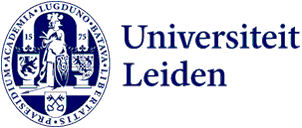
Improving education with videos and humour
To better prepare students for lab sessions, a team from the BSc-programme Bio-Pharmaceutical Sciences (BFW) creates interactive videos. These videos use humour and examples to show students basic skills and commonly used procedures. 'We want to make education more efficient and fun.'
'We must always keep looking how to improve education,' says project leader Marjo de Graauw. 'Introducing students to the lab takes a lot of time. They have to get to know the materials and techniques. Because this is all new to them, they ask a lot of questions.'
To better prepare students for the lab lessons, de Graauw is making videos, together with a team from the SURF project. 'With interactive video protocols, students get a visualisation of what they have to do, with which materials and what these materials can do.'

It sticks better with humour
The explanations must stick well with the students. 'Using humour works very good,' say PhD students Tahmina Fariaby and Majlen Dilweg, who also give practicals. 'In the videos, we want to get students to think about the actions they will be carrying out in the lab. We also want to teach them that experiments can go wrong and why.'
Shaking without a cap on the separating funnel
In the interactive videos, the students must make choices. Depending on their choice, a video starts playing showing a right or wrong action. 'There is a video where the instructor pours a liquid into a separating funnel, a piece of laboratory glassware. Then the students are asked if the liquid can be shaken now. If they click 'yes', the person starts shaking without a cap on. Resulting in the liquid flying around everywhere.'
‘Thinking about alternative choices with the team was very funny,’ say the two PhD students. 'Even though everything is based on real moments where we have seen it go wrong in the lab.'

Writing a script without experience
From university lecturer to video maker is not an easy step. Fortunately, thanks to the €100,000 SURF grant, the team also has a video specialist. 'Making videos is new to all of us. You have to think carefully about what you want to tell and how you can best convey that,' says de Graauw. 'That’s why we started writing scripts together with video specialist Amber Gerritsen.'
These scripts include which actions need to be filmed, from which angle and the text that comes with it. 'The teachers are the experts with regard to content and Amber coaches the team to make it visually attractive.’

From left-handed to right-handed
The recordings did not always go smoothly. For example, during one recording, a video was made with a left-handed student assistant and the next day the sequel was made with a right-handed one. 'We learned a lot along the way.'
To help other institutions set up similar projects, the team is developing an instruction manual for teachers. 'This will be made public, so that everyone in the Netherlands can start making their own interactive videos. In this way, they don't have to make the same mistakes we made.'
Shouting from the rooftops
Also, all videos will be made public. 'We see that videos are still used far too little in education. And yet we saw during Corona that it works! It takes some energy to make them, but you get so much back in return.'
The first evaluations show that the concept works well. Students say they understand the techniques better before they enter the lab, they feel more secure and they can work more independently. 'Sometimes we want to shout from the rooftops: go do this too! Improving education together gives so much energy!'
